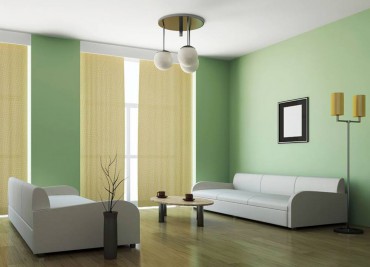 Choosing paint colors can cause mild anxiety in some people. It’s a lot of space to cover all the walls, so the color better be, well, pretty great. It has to work with so many components in your home, from fixed items like cabinets and flooring, to furniture and accessories.
Choosing paint colors can cause mild anxiety in some people. It’s a lot of space to cover all the walls, so the color better be, well, pretty great. It has to work with so many components in your home, from fixed items like cabinets and flooring, to furniture and accessories.
That sounds like a pretty tall order, but making the decision in a few small steps will help you gain a successful result.
The first thing that might be considered is the amount of natural light your home has. Light-filled spaces can tolerate more color and not feel too overpowering. Darker spaces might need less color, and one with a higher light reflectively (your paint store can tell you this number, and it may also be on the paint chip samples).
Another consideration can be ceiling height. In a home with lower ceilings, many people prefer to keep the ceilings white, or the overall color light. Even with higher ceilings, white is still a classic look that is very popular.
For many years, people have moved away from an all-white house to a color, whether a neutral tan, pale blues and greens, or the most recent trend of, grey, used everywhere as base.
Many paint companies have a section in their fan decks of their neutrals, and there are so many to choose from. From there, you can add accent walls in a variety of colors to create different moods in each room and space.
In choosing the colors you want, take cues from art, furniture and even your clothes closet. Trends in colors change quickly, but by using a reasonable neutral overall color and letting your accent wall be the impact, you can easily and quickly change out those walls as the trends change.
I always suggest sampling colors, and most paint stores have small samples of their most popular colors; others will custom-mix small samples for a very reasonable fee.
For interiors, my favorite method is using artist’s canvas panels that you can get reasonably at the local craft store. They come in a variety of sizes. I like 18 inches or larger, and once painted with the colors you like, you can move them around the room at different times of the day to see what you think. This method prevents the sample areas from showing through when you go to paint.
Paint sheen is something else to consider. The days of semi-gloss in the kitchen and flat paint everywhere else are long gone.
The sheen you choose can have a lot to do with the light you get (more light, or water reflection, go low to no sheen). If you have older or not quite perfect plaster or drywall, low sheen (flat or eggshell) will help to minimize imperfections. Satin sheen is a good happy medium, durable enough to wipe down with kids, but not so shiny that it is distracting.
A little thought and planning and testing your color choices will help you to have a successful color palette that makes you feel right at home.
























